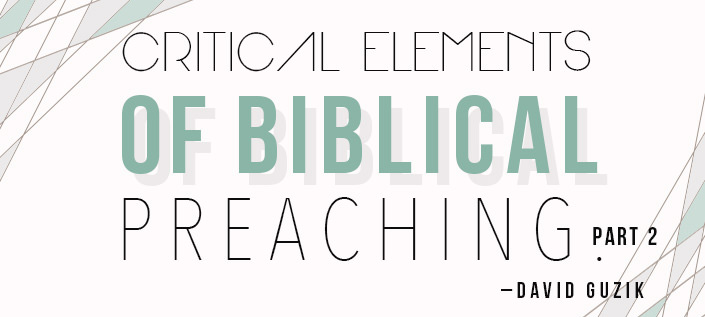
In my own preaching and in my work with many students over the years, I have a thought of what the most important thing is in the preparation of the teacher.
The core of being a good expository teacher is simply learning to see what is there in the Biblical text. Of course, this is only important if you are interested in exposition – in letting the themes and the words of the text set the themes and words of your preaching. If you have your own message to preach and just want to find a few Bible passages to support your message, that is a different approach – but it isn’t expository teaching.
To “see what is there” sounds too simple or like something from a fortune cookie. Yet if we are interested in real exposition of the Scriptures – we begin by simply seeing what is there in the Biblical text.
Our mentality is not that we must create the message; rather we think the message is in the Bible passage itself, and we must simply see it, understand it, and think carefully of how to explain and apply that message. In preparing to preach or teach the Bible, you should not try to create meaning or interest or excitement with the text. Instead, come to the text believing it has all those things and more.
This speaks to the need for close observation in the effective expositor. These are fundamentals of Inductive Bible Study. Seminars and classes on Inductive Bible Study methods are very helpful. However, it is important to have more than the tools that a class or seminar might give, one must always maintain the thought processes of inductive study. We must come to the Bible with a great concern to simply see what is there, to understand it, and then explain it and apply it.
It sounds so easy, but it isn’t. In my work with students who are learning to prepare to preach and teach, many of them are trying to see deep and profound things in the Bible text instead of the plain, obvious things. They are trying to sound profound and original, instead of being simple and direct. They want to make their listeners say “wow.” That isn’t bad, but they need to say “wow” at the truth of the Bible, not at the skill of preacher.
Pablo Picasso was famous for his simple and child-like art. He started out painting in more sophisticated styles, but over time became more and more simple in his approach. He once said, “It took me four years to paint like Raphael, but a lifetime to paint like a child.” In the same way, it may take us some time to learn how to be content with the text itself and to learn how to see what is there.
Don’t’ get me wrong – the Bible is filled with deep and profound truth. Yet the way to find those deep and profound things is to focus on the simple and clear things and to think upon them deeply. If you come to the Bible text focused on looking for really deep and original things, you will miss the simple and clear things that will benefit your listeners. Or worse, your desire for others to think you are deep, original and profound can lead to a lot of erroneous teaching.
In my next post I will write about the obstacles to seeing what is there. We need to start with a good frame of mind and say to our Savior, “Jesus, the message I need to preach is in Your Word. I don’t need to create it; I need to see what You have already said.” We can learnto see what is there.






